Juicing has blown up in recent years due to the amazing health benefits and convenience. But if you might be wondering “how does a juicer work?”
The answer varies depending on the type of juicer.
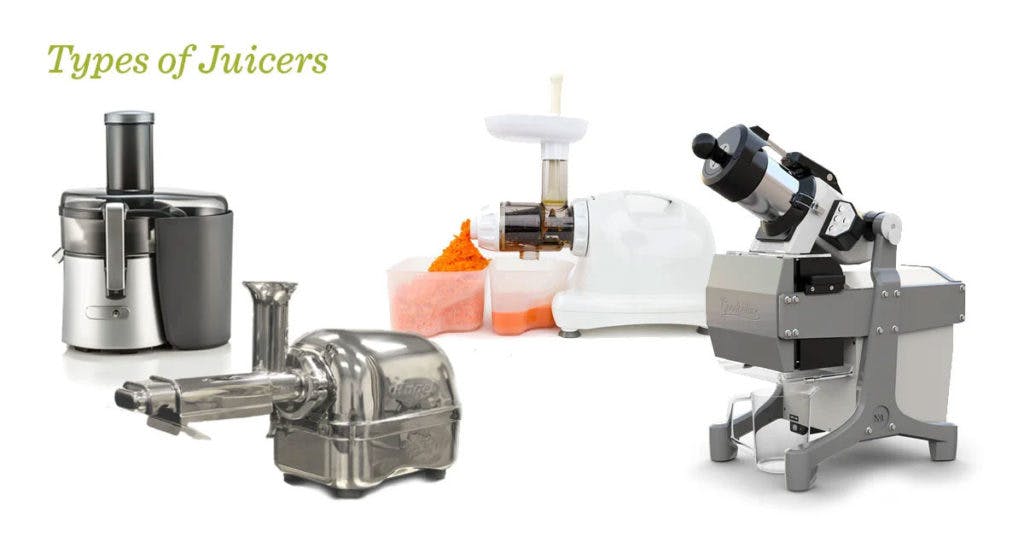
The four most common types of juicers, each of which we will cover today, are:
- Centrifugal juicers
- Masticating juicers
- Twin gear juicers
- Cold press juicer machines
Let’s dive right into the juicing process of each machine.
How Do Centrifugal Juicers Work?
The most popular home juicer due to its cheap price, centrifugal juicers shred fruits and vegetables at 6,000-14,000 rotations per minute (RPM). No wonder they’re also known as fast juicers.
Produce is fed through a tube until it makes direct contact with the fast-spinning blade. The resulting juice is thrown at high speed towards the sides of the machine by the centrifugal force of a spinning basket. From there, it’s pushed through a sharp screen into a jug or glass.
The cheap price and speedy juicing process comes with downsides. The juice from centrifugal juicers tends to separate and break down quickly. And since the produce is essentially being chopped up at super-speed, centrifugal-made juice includes up to 30% solid produce matter (skins, seeds, insoluble fiber, and stems).
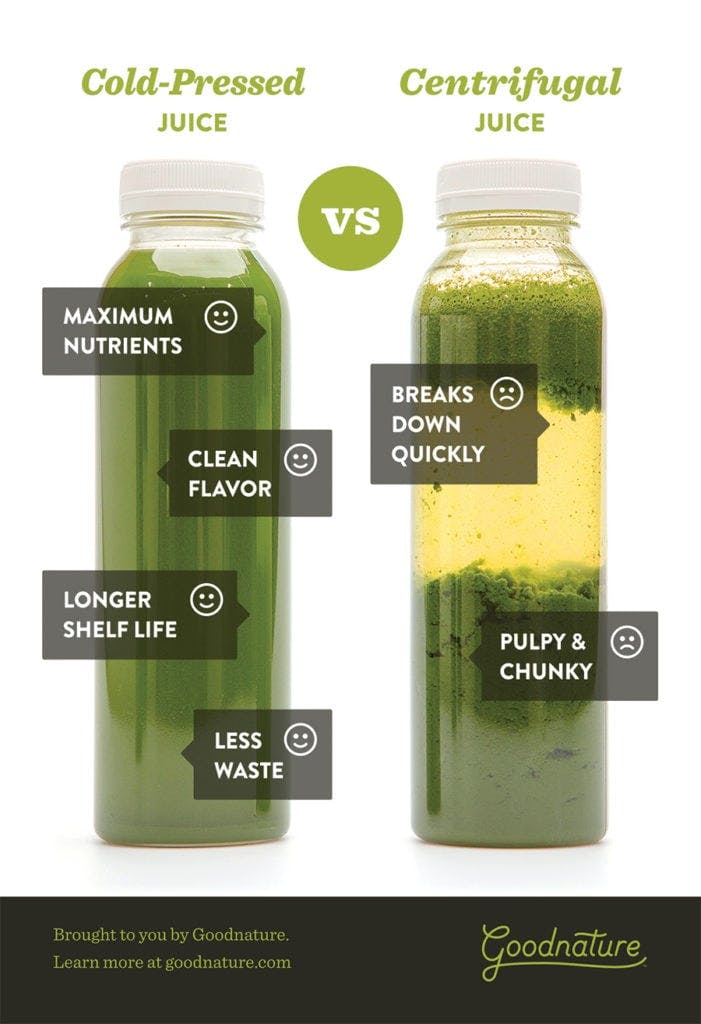
Centrifugal juicers are best for juicing beginners on a budget who want to put in as little effort as possible. If you want to pre-make juice for later consumption or make large batches, a centrifugal juicer is not for you. It’s better for people who want to make a glass of fresh juice or two to drink right away.
You can learn more about the pros and cons of centrifugal juicers here.
How Do Masticating Juicers Work? (AKA Slow Juicers)
The way masticating juicers function is, in some ways, very similar (albeit slower) to that of centrifugal juicers, and their downsides are similar.
Produce is crushed by a single auger (gear) at a slow speed of 80-100 RPM. The crushed produce is then pushed through a sharp screen into a jug or glass, resulting in a greater juice yield than a centrifugal.
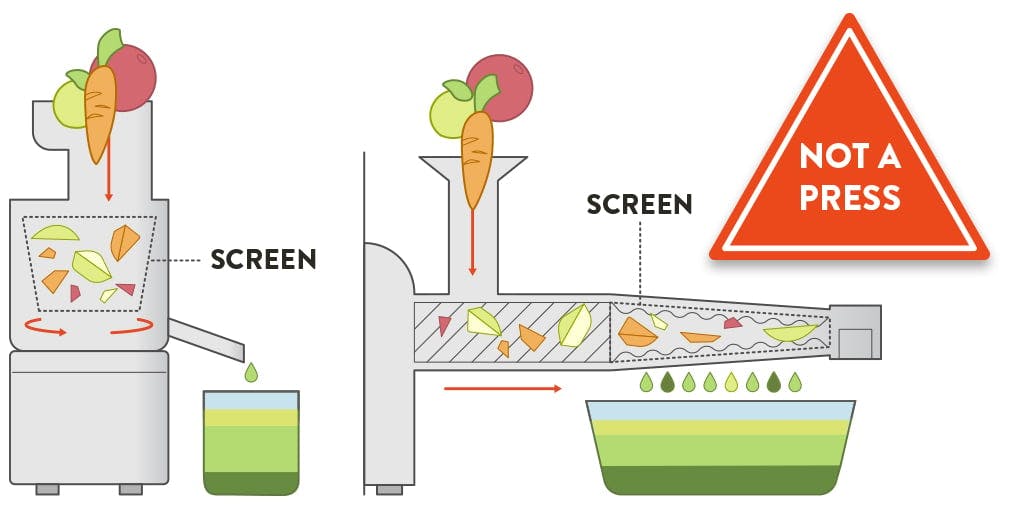
There are a few big downsides to juice made with masticating juicers. The resulting juice tends to be very pulpy and foamy with a thick and chunky mouth feel – it’s not pleasant, especially when juicing leafy greens (like kale). Also, the product can be bitter to the taste.
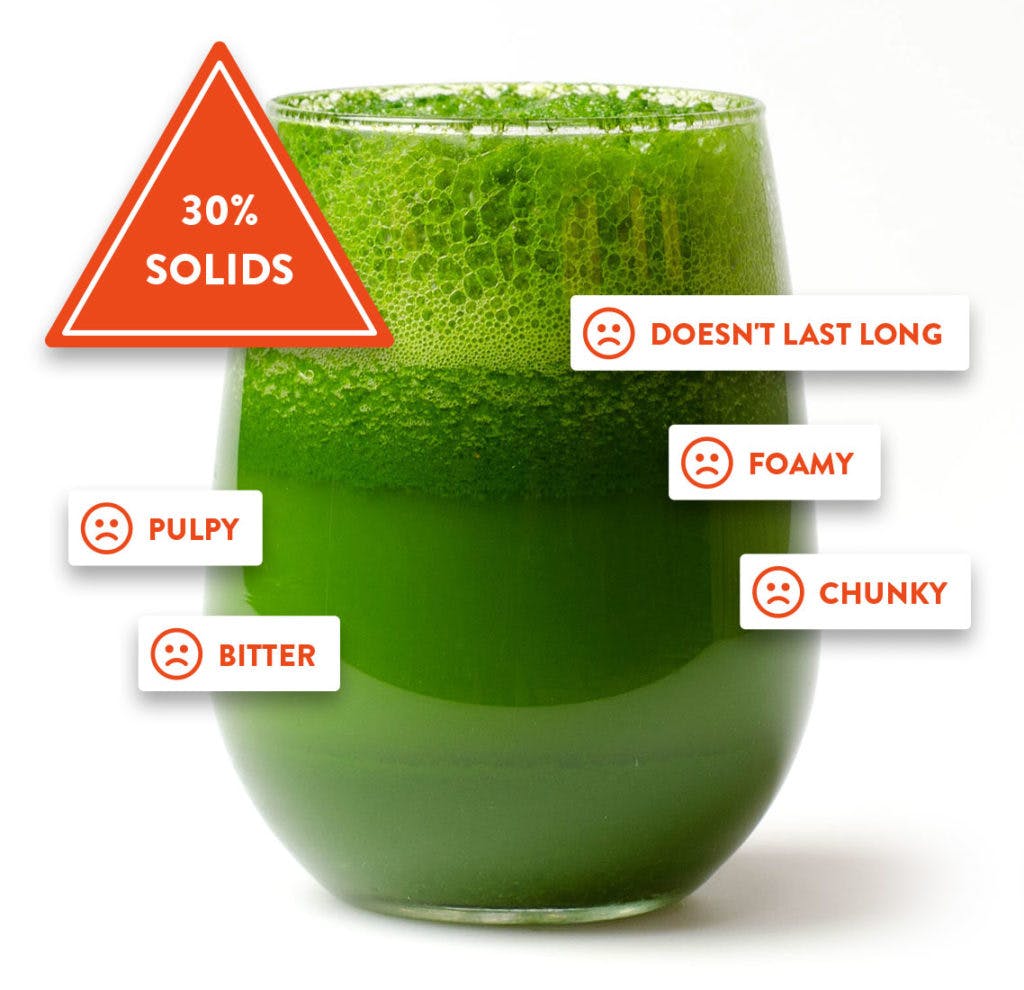
You can learn more about the process here and the pros and cons of masticating juicers here.
How Do Twin Gear Juicers Work?
As the name suggests, twin gear juicers use two gears (augers).
The augers spin and pull the produce in, chewing it up. Then, the augers extract juice by pushing the chewed up produce through a sharp screen.
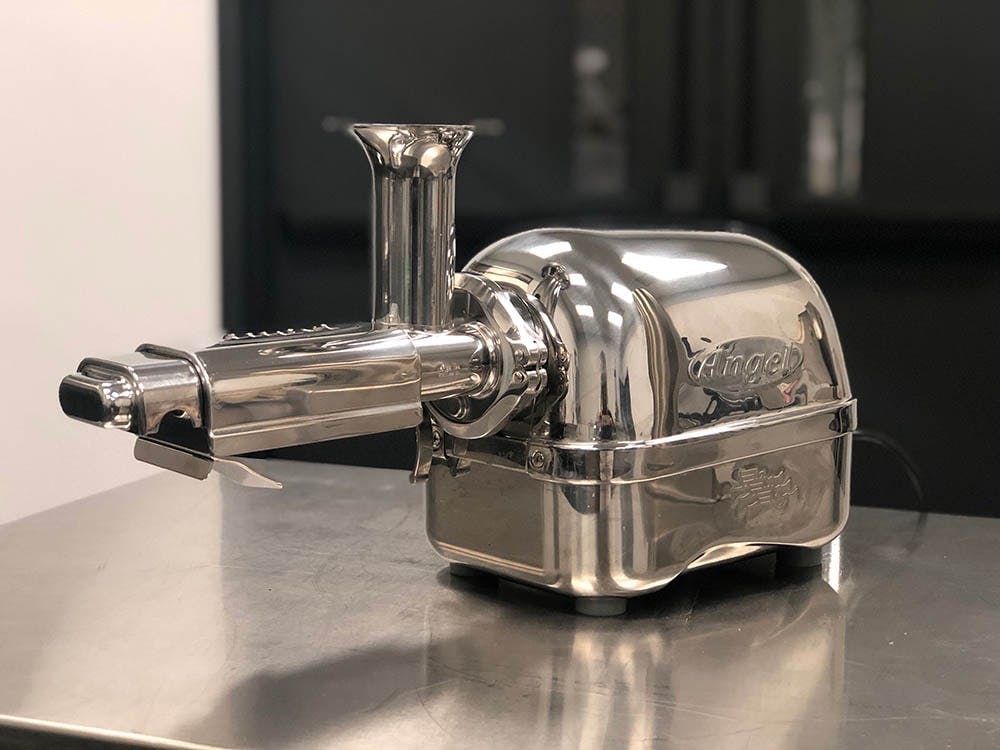
Like centrifugal- and masticating-made juice, however, juice made by twin gear juicers contains a lot of solid plant matter. Up to 30% of your juiced produce will be chunky stuff like skin, seeds, and stems. Twin auger juicers are also slow, expensive, and difficult to clean.
You can learn more about the pros and cons of twin gear juicers here.
What These First Three Types of Juicers Have in Common
Masticating, centrifugal, and twin gear juicers all have one (not so good) thing in common.
They all extract juice by forcing the plants against a sharp screen, which leads to suboptimal results.
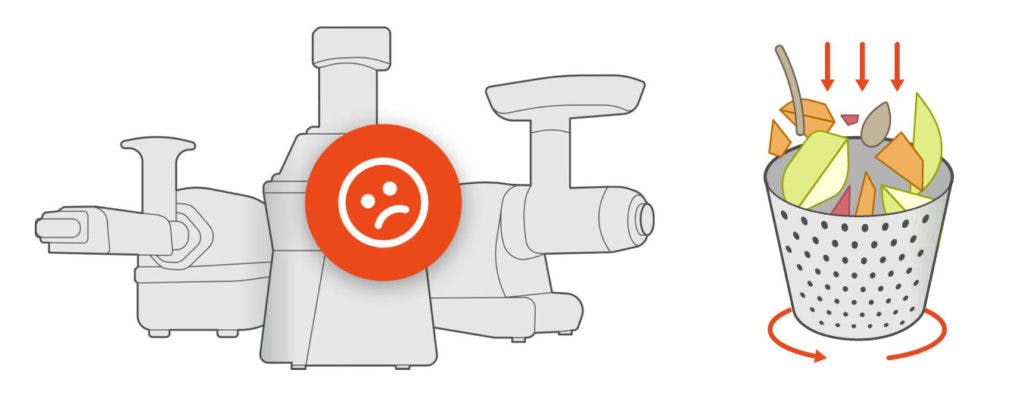
What’s more, many brands of screen juice extractors market themselves as cold-pressed, but they don’t actually contain a press at all! Companies likely do this because they know the best juicer type is a true cold press machine (one that actually contains a press), and they want to reap the benefits of marketing their juicers as such (even if it’s really not).
That leads us to…

How Do Cold Press Juicer Machines Work?
Juicers that use hydraulic or pneumatic press technology are the best type of juicers you can buy. These are what most juice bars use to make super high-quality juice for their customers.
There are two stages to the juicing process of cold press machines:
- After being dropped into the juicer, the produce is chopped into the consistency of a chunky salsa by a stainless steel spinning blade.
- Juice is extracted from the chunky produce by pressing it under thousands of pounds of pressure.*
*During stage 2, any resulting pulp or chunks are filtered with the press bag. This ensures that the resulting juice is super smooth and very pleasant to drink.
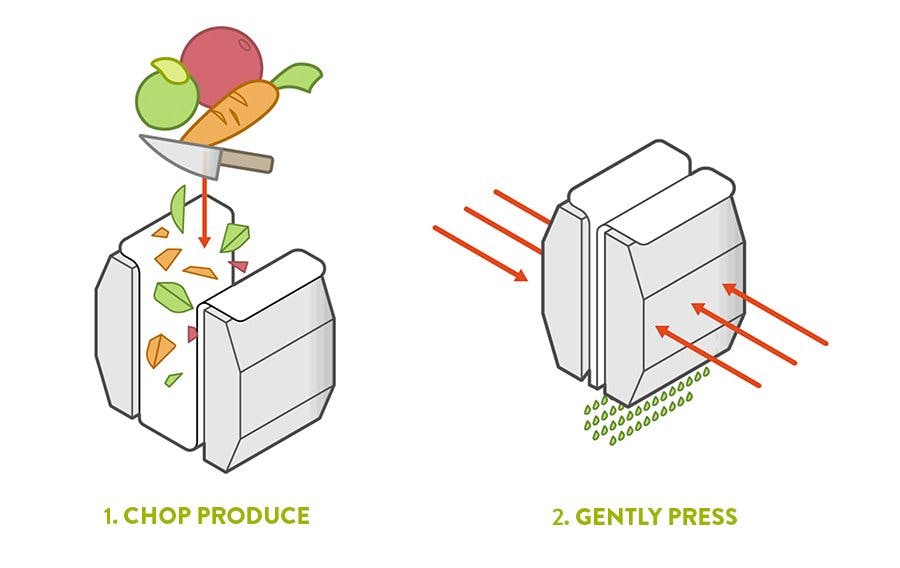
The only real downside of a juice press machine is the price tag. Put simply, juice presses are expensive kitchen appliances meant for juice businesses, restaurants, and at-home juice aficionados who want the very best-testing and healthiest juice.
But you get what you pay for. Not only is the juice yield typically higher with cold press machines, the juice contains more vitamins and nutrients.
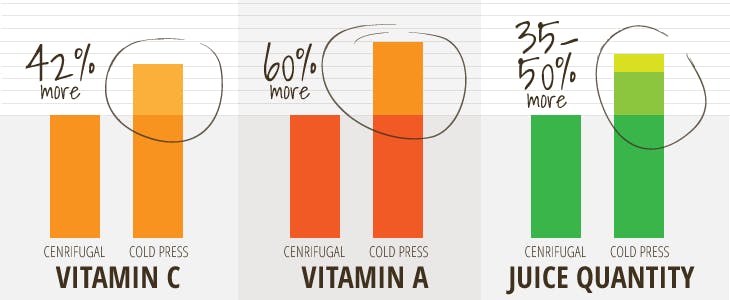
You can learn more about cold press juicers here.

Final Thoughts
The best juicer option is (by far) a cold press juicer. That’s true whether you’re making fruit juice, vegetable juice, or something like wheatgrass shots.
If you’re a juicing beginner and don’t want to spend up for the highest quality, we recommend going with a centrifugal juicer because of it’s ease of use. Just keep in mind you might get some chunky veggies in your juice and the taste will not be optimal.
We make the highest quality, genuine cold press juice machines here at Goodnature, and they’re used by juice businesses, restaurants, and home-juicers all over the world. Learn about the Goodnature difference here.
Comments
Can you send good catalogs
Regarding Comercial purpose
Suitable machines
appreciated
Hi Anvar, we will email you shortly!
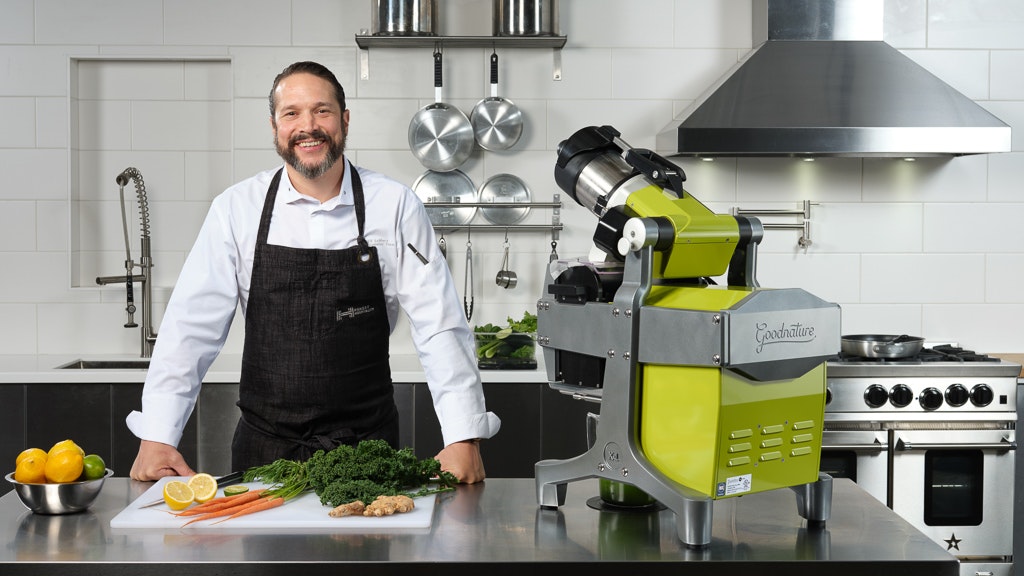
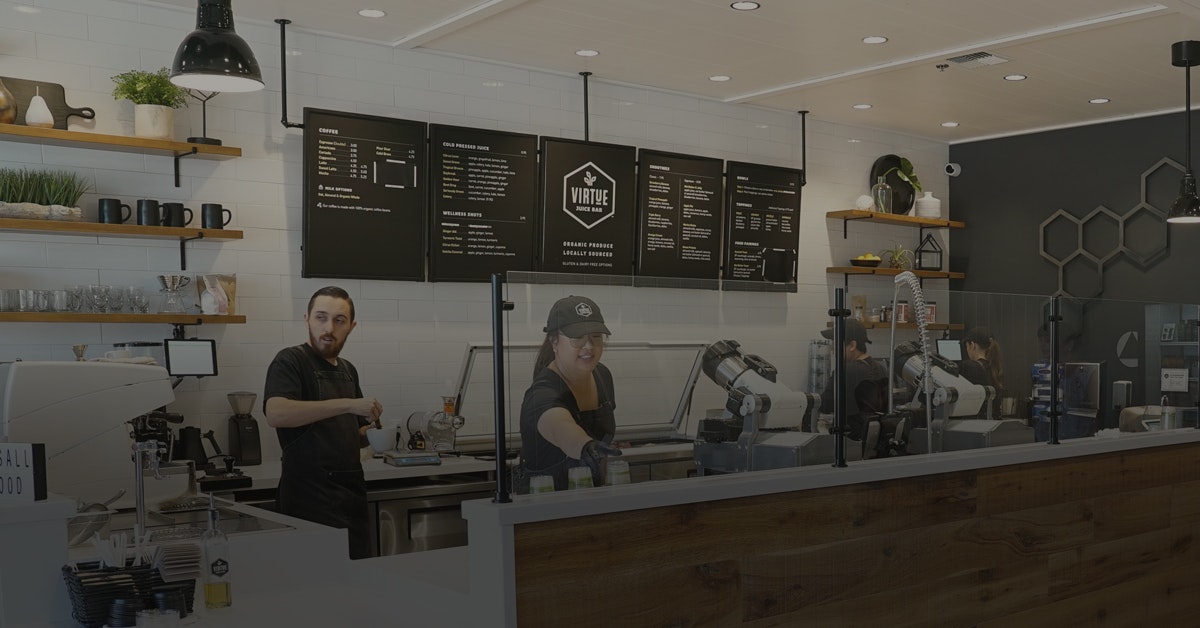
Comment